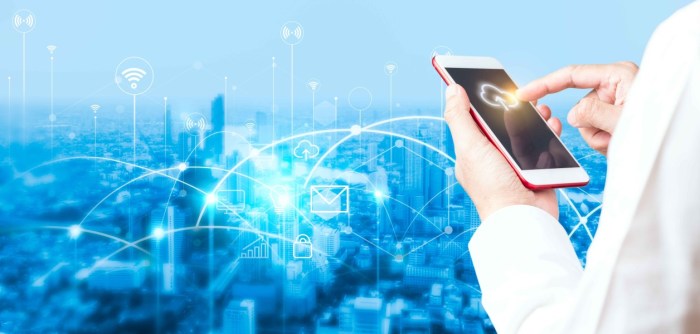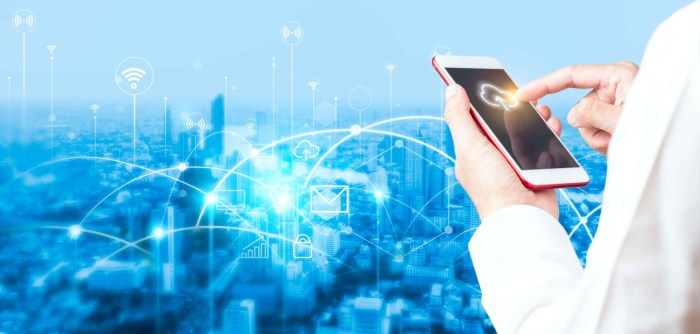Privacy concerns surrounding LiDAR data collection on smartphones. are rapidly escalating as this depth-sensing technology becomes increasingly integrated into mobile devices. While LiDAR offers exciting possibilities for augmented reality applications and improved photography, its capacity to capture highly detailed three-dimensional maps of our surroundings raises significant privacy implications. This detailed data, encompassing not only physical structures but also potentially identifying details about individuals and their activities, presents a new frontier in data security and ethical considerations.
The potential for misuse is substantial. LiDAR data could be exploited for surveillance, unauthorized mapping of private property, or even the creation of highly realistic deepfakes. Understanding the technical capabilities of LiDAR, the security measures in place (or lacking), and the legal frameworks governing its use is crucial to mitigating these risks and ensuring responsible innovation.
Data Anonymization and De-identification

LiDAR data, while offering a wealth of information for applications like autonomous driving and 3D mapping, presents significant privacy challenges. The detailed point cloud data can reveal sensitive information about individuals and their environments, raising concerns about potential misuse. Effective anonymization and de-identification techniques are crucial to mitigate these risks and allow for responsible data utilization.
The process of anonymizing and de-identifying LiDAR data aims to remove or obscure personally identifiable information (PII) while preserving the data’s utility for research and development. This involves a range of techniques, each with its strengths and limitations, and the effectiveness often depends on the specific application and the level of privacy required. It’s important to note that achieving perfect anonymity is often impossible, and a layered approach is typically necessary.
Limitations of Current Anonymization Methods for LiDAR Data
Current anonymization methods for LiDAR data face several challenges. Techniques like noise addition or data aggregation, commonly used for other data types, are less effective with LiDAR’s high-resolution nature. Even subtle alterations can affect the data’s integrity, hindering its usefulness for many applications. For instance, removing individual points to obscure a person might distort the overall geometry of a scene, making the data less valuable for tasks requiring precise measurements. Furthermore, the inherent three-dimensional nature of LiDAR data complicates the anonymization process compared to simpler two-dimensional image data. Sophisticated re-identification attacks, leveraging contextual information and background knowledge, can potentially compromise even seemingly anonymized data.
Examples of Anonymization Failure
Consider a scenario where LiDAR data is used to create a 3D model of a city street. Even after removing individual points representing pedestrians, the remaining data might still reveal patterns of movement or recurring locations, allowing for re-identification of individuals through analysis of their routines. Similarly, anonymizing vehicle data by removing specific vehicle features might still leave unique identifiers such as wheelbase or overall dimensions, potentially allowing for re-identification. Another example is the use of LiDAR data for indoor mapping. While removing individual points representing people may seem sufficient, the overall shape and layout of the room, combined with the location of furniture and other objects, could still provide enough information to re-identify the location.
Comparison of Data Anonymization Techniques
Several anonymization techniques are being explored for LiDAR data. These include data perturbation (adding noise to the point cloud), point cloud simplification (reducing the density of points), and differential privacy (adding carefully calibrated noise to ensure privacy while preserving data utility). Each technique has trade-offs between privacy protection and data utility. Data perturbation, while relatively simple, can significantly degrade data quality. Point cloud simplification reduces the resolution and detail, limiting the data’s applicability for certain tasks. Differential privacy offers stronger privacy guarantees but can require more complex algorithms and might introduce significant noise, potentially affecting data analysis. The optimal technique depends heavily on the specific application and the acceptable level of data degradation. A hybrid approach, combining several techniques, might offer the best balance between privacy and utility.
Impact on Vulnerable Groups: Privacy Concerns Surrounding LiDAR Data Collection On Smartphones.

LiDAR data collection, while offering potential benefits in various fields, raises significant privacy concerns, particularly for vulnerable populations. These groups may lack the resources or understanding to navigate the complexities of data privacy, leaving them disproportionately exposed to potential harms. The inherent capabilities of LiDAR technology to capture detailed environmental information, including the presence and movements of individuals, necessitates a careful consideration of its impact on these vulnerable segments of society.
The potential for LiDAR data to exacerbate existing social inequalities is substantial. For example, detailed mapping of residential areas could reveal sensitive information about the socioeconomic status of individuals, potentially leading to targeted marketing, insurance discrimination, or even increased vulnerability to crime. This is especially concerning in areas with already marginalized communities, who may lack the resources to effectively advocate for their privacy rights. Furthermore, the potential for misidentification or biased algorithms in analyzing LiDAR data could lead to unfair or discriminatory outcomes, reinforcing existing inequalities.
Vulnerable Groups and Specific Risks
Individuals experiencing homelessness, those living in poverty, and members of minority ethnic groups are particularly vulnerable to the privacy implications of LiDAR data collection. The detailed imagery generated by LiDAR can easily identify locations frequented by homeless individuals, potentially leading to harassment or displacement. Similarly, LiDAR data could reveal patterns of movement and activity within low-income neighborhoods, potentially informing discriminatory practices in areas such as lending, insurance, or employment. Members of minority ethnic groups might also face increased risk due to potential biases in algorithmic analysis of LiDAR data, leading to inaccurate or unfair profiling.
Mitigating Negative Impacts
Effective mitigation strategies require a multi-pronged approach. Firstly, robust data anonymization and de-identification techniques are crucial. This includes techniques such as removing personally identifiable information from LiDAR datasets before analysis or use. Secondly, transparent data governance frameworks are essential, ensuring that the collection, use, and storage of LiDAR data are subject to strict ethical guidelines and legal regulations. These frameworks should incorporate mechanisms for public oversight and accountability. Thirdly, community engagement and education are vital. Vulnerable communities must be informed about the potential risks of LiDAR data collection and empowered to participate in decisions about how this technology is used.
Recommendations for Protecting Vulnerable Populations, Privacy concerns surrounding LiDAR data collection on smartphones.
A comprehensive approach to protecting the privacy of vulnerable populations requires a combination of technological, legal, and social measures.
- Implement strict data minimization principles, collecting only the LiDAR data necessary for the specific purpose.
- Develop and enforce strong data security protocols to prevent unauthorized access and misuse of LiDAR data.
- Establish independent oversight bodies to monitor the ethical use of LiDAR data and investigate potential privacy violations.
- Promote community engagement and education initiatives to raise awareness of LiDAR data privacy concerns and empower vulnerable populations to advocate for their rights.
- Invest in research to develop and implement privacy-enhancing technologies, such as differential privacy, to protect sensitive information within LiDAR datasets.
The integration of LiDAR into smartphones presents a double-edged sword. Its potential benefits are undeniable, but the accompanying privacy risks demand careful consideration and proactive mitigation. Robust security protocols, transparent data handling practices, and a comprehensive legal framework are essential to harnessing the power of LiDAR while safeguarding individual privacy. Continued dialogue among developers, policymakers, and the public is vital to ensuring that this transformative technology is used responsibly and ethically.
FAQ Section
What specific data does LiDAR collect from smartphones?
LiDAR collects point cloud data representing the three-dimensional structure of the environment, including distances to objects and their relative positions. This can indirectly reveal details about people, objects, and locations.
Can LiDAR data be used to identify individuals?
While not directly identifying, LiDAR data, when combined with other data sources, could potentially be used to infer identities or track individuals’ movements over time.
How can I limit LiDAR data collection on my phone?
Check your phone’s settings for options to disable or restrict LiDAR functionality. Some apps utilizing LiDAR may also offer privacy settings.
What are the penalties for misuse of LiDAR data?
Penalties vary depending on jurisdiction and the nature of the misuse, potentially including fines and legal action under existing privacy laws.
Understand how the union of best smartphone camera for low light photography can improve efficiency and productivity.

